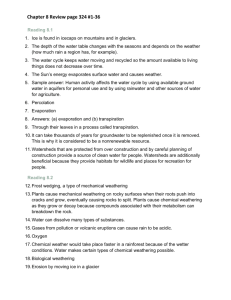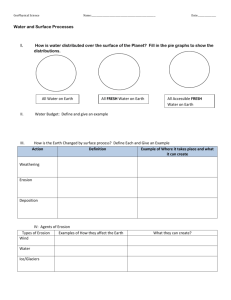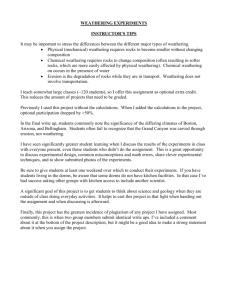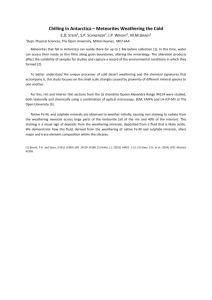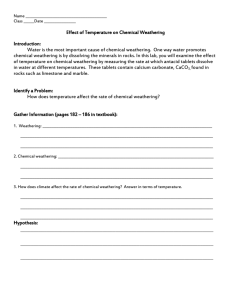Rates of Weathering Lab #3
advertisement
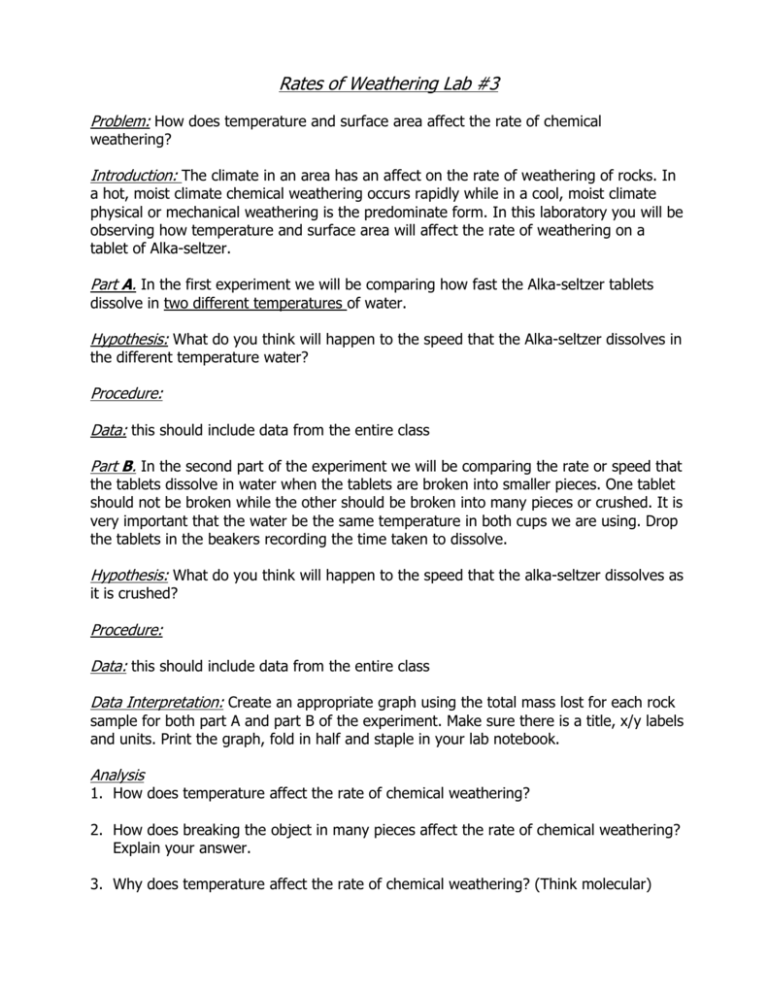
Rates of Weathering Lab #3 Problem: How does temperature and surface area affect the rate of chemical weathering? Introduction: The climate in an area has an affect on the rate of weathering of rocks. In a hot, moist climate chemical weathering occurs rapidly while in a cool, moist climate physical or mechanical weathering is the predominate form. In this laboratory you will be observing how temperature and surface area will affect the rate of weathering on a tablet of Alka-seltzer. Part A. In the first experiment we will be comparing how fast the Alka-seltzer tablets dissolve in two different temperatures of water. Hypothesis: What do you think will happen to the speed that the Alka-seltzer dissolves in the different temperature water? Procedure: Data: this should include data from the entire class Part B. In the second part of the experiment we will be comparing the rate or speed that the tablets dissolve in water when the tablets are broken into smaller pieces. One tablet should not be broken while the other should be broken into many pieces or crushed. It is very important that the water be the same temperature in both cups we are using. Drop the tablets in the beakers recording the time taken to dissolve. Hypothesis: What do you think will happen to the speed that the alka-seltzer dissolves as it is crushed? Procedure: Data: this should include data from the entire class Data Interpretation: Create an appropriate graph using the total mass lost for each rock sample for both part A and part B of the experiment. Make sure there is a title, x/y labels and units. Print the graph, fold in half and staple in your lab notebook. Analysis 1. How does temperature affect the rate of chemical weathering? 2. How does breaking the object in many pieces affect the rate of chemical weathering? Explain your answer. 3. Why does temperature affect the rate of chemical weathering? (Think molecular) 4. In what type of climate would chemical weathering have the greatest affect on the land? Mechanical weathering? Conclusion: Write two separate paragraph conclusions (one for each part of the experiment). Did your conclusion support your hypothesis? Why or why not? Use your data to back up your statements. What is the relationship between the variables? Why do you believe this relationship exists? What were some possible sources of errors for the experiment? If you were to redo the experiment what would you change to make it more valid? Describe how this experiment connects to the real world.




